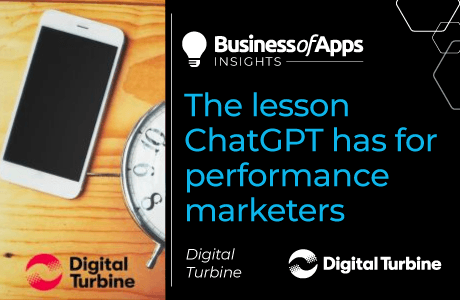
It’s no surprise that the rise of an open ecosystem, like Android, has brought opportunities for alternative solutions from OEMs, carriers and other industry giants such as Amazon and Samsung to distribute apps. It’s no longer the “two-store party” where you park your app on the shelf to be discovered. It’s a lot more complex and those marketers who are willing to tailor their UA strategy by channel will reap the benefits.
Consumers today have many ways to discover and download apps outside of Google Play and The App Store. Last year, Epic Games began distributing its popular game, Fortnite: Battle Royal directly to Android users and bypassing Google Play altogether. Earlier this year, Google, Apple and Microsoft all announced cloud-based “all you can eat” video games, which will be exclusive to those services. In other words, gaming apps in Apple Arcade won’t be available in the App Store. Meanwhile, carriers like T-Mobile are offering free and pre-installed apps as a way to entice users to their services, and in many parts of the world, Google Play and the App Store don’t even exist (worldwide, Apple and Google only represent 49% of downloads, and of the top ten app stores in China, Google Play is last on the list with only 3.6% of the downloads, and Apple doesn’t even make the list). Amazon Appstore for Android, on the other hand, is available in 200 countries, although it only lists 475,617 apps.
What’s driving all of this change? The app market is maturing, and like all sectors of the economy, with age comes fragmentation, which is a situation that isn’t always welcomed by marketers. Today, there are over 300 app stores, and the list is growing. User acquisition campaigns are challenging (and expensive) enough as it is, but going forward they’ll become infinitely more complex, given there are now multiple choices globally for downloading apps. How will skilled app developers and brands manage this growing dynamic? How should you distribute your app? Which storefronts and partnerships should you invest in? How much should you invest in app store optimization and which store? Will some apps perform better in an alternate channels? Marketers, in the very near future, will need to focus not only on testing media dollars on multiple ad networks but also the app stores and channels.
Although UA campaigns will become more complex, I don’t see this as a bad development. I speak with a lot of app marketers who say that a huge amount (sometimes more than 90%) of users who click on UA ads abandon the installation once they arrive in the store. Users get distracted or decide to download a competitive app, which is a shame, because the marketer still needs to pay the publisher that hosted the ads for all those clicks.
The high rate of app install abandonment points to another issue I don’t see discussed much in the press: app stores are loaded with friction, and consumers encounter multiple failure points along the way. For instance, the user may be interested in the advertised app but doesn’t want to leave the current app he or she is in, or the app takes too long to download. That’s on top of the distractions I mentioned earlier. Alternative solutions that eliminate these friction points will be welcome news to app developers I’m sure.
Apps themselves are changing consumer expectations. We use Uber to request that a car come directly to us rather than go out into the street to hail a cab. We order food that’s delivered to our home or office rather than pick it up in person. Apps are teaching consumers to reduce the number of steps required to complete a task, and to expect whatever it is they want to be delivered to them directly on demand. But that’s not the Google Play or App Store paradigm. App stores require users go to them, find an app and then install it.
Put all these challenges together and one can see how fragmentation — read: more options — will ultimately benefit app marketers, especially if those options reduce friction. For a certain kind of advertiser, it may make a lot of sense to preload apps on mobile devices, or to enable an install directly from a display ad (especially if the user is already in one of your apps). Or, they may find value in going the Epic Games route and distribute apps via their websites.
So while fragmentation does come with challenges, working through them will deliver great opportunities for marketers. The changing market (driven by the evolving behavior of consumers) will start to force diversification, and the marketers who haven’t already found new avenues to reach users will be missing out.











